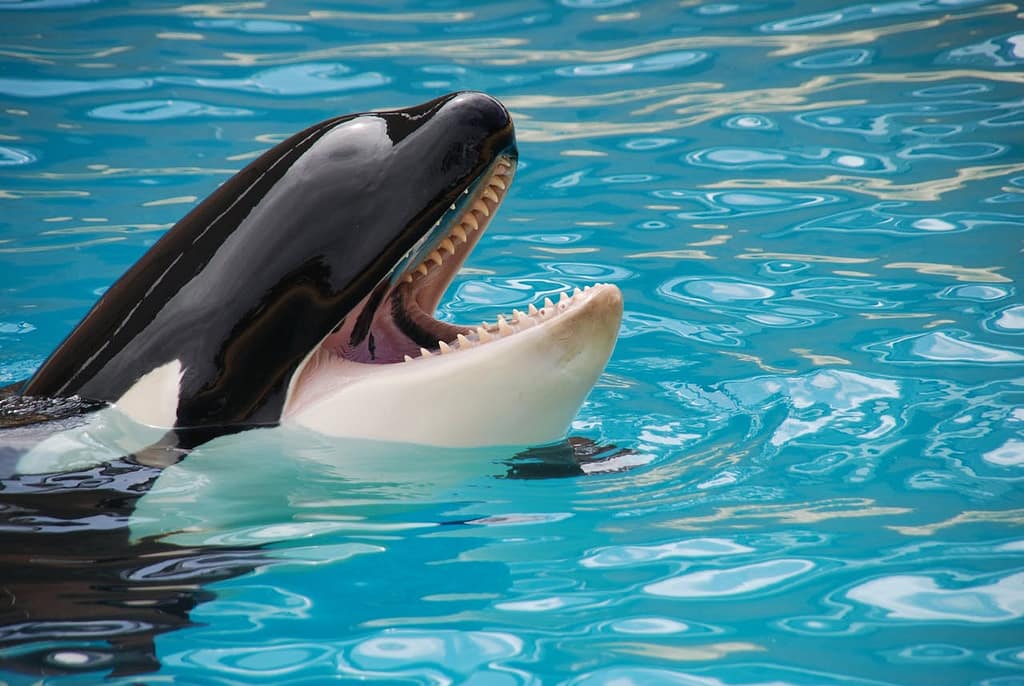Imagine a single gram of ocean water holding up to 10,000 tiny zooplankton. These small creatures are key to the health of our oceans. They range from tiny crustaceans to big, jelly-like ones. Zooplankton are crucial for keeping the ocean’s balance.
They make up to 90% of the ocean’s living matter. These tiny heroes support the food chain and help with global carbon cycles.

Key Takeaways
- Zooplankton are tiny, drifting organisms that are essential to marine ecosystems.
- They range from microscopic crustaceans to gelatinous giants and make up a significant portion of the total marine biomass.
- Zooplankton are the primary consumers in the ocean’s food web and play a crucial role in global carbon cycles.
- Understanding the diversity and importance of zooplankton is key to preserving the health of our oceans.
- This article will explore the fascinating world of zooplankton and the environmental factors that impact their populations.
Introduction to Zooplankton
Zooplankton are tiny, floating creatures that live in oceans and freshwater. They are key to aquatic food webs as primary consumers. They help transfer energy from primary producers to higher trophic levels. Zooplankton are vital for keeping marine ecosystems balanced.
Understanding the Vital Role of Zooplankton
Zooplankton are crucial to trophic dynamics in water. They eat tiny algae and matter, turning it into energy for bigger marine life. This link between producers and consumers makes zooplankton essential for marine ecosystems to thrive.
Zooplankton: The Backbone of Marine Ecosystems
Zooplankton, from tiny copepods to big jellyfish, are the base of marine ecosystems. They feed many marine animals, like fish, seabirds, and whales. By moving energy up the food chain, zooplankton keep the ocean’s life in balance.
| Zooplankton Species | Ecological Role | Significance in Marine Ecosystems |
|---|---|---|
| Copepods | Primary consumers, feeding on phytoplankton | Key part of zooplankton, crucial food for big marine life |
| Krill | Keystone species, feeding on phytoplankton and detritus | Basic food for many marine predators, like whales and seabirds |
| Jellyfish | Predators, feeding on other zooplankton and small fish | Helps control trophic dynamics and keeps ecosystems balanced |
The variety and number of zooplankton show how healthy and productive marine ecosystems are. By knowing how important these tiny creatures are, we can see how complex and connected aquatic food webs are. This helps us protect these delicate systems.
Zooplankton Diversity: A Myriad of Species
The world of zooplankton is full of life, from tiny crustaceans to huge ocean giants. This zooplankton diversity shows how complex and rich our ocean ecosystems are.
From Microscopic Crustaceans to Gelatinous Giants
At the small end, zooplankton include tiny crustaceans like copepods and krill. These small but important creatures eat phytoplankton and are key to the plankton diversity.
Next to these small crustaceans, there are the big gelatinous giants of the sea. Creatures like jellyfish and ctenophores are beautiful and crucial for the ocean’s balance.
“The diversity of zooplankton species is a testament to the resilience and adaptability of life in our oceans.”
Exploring zooplankton diversity is a journey of discovery. It shows us the complex life that supports our oceans. By learning about these creatures, we see how they keep our marine world healthy.

Zooplankton Biomass: Abundance and Distribution
The ocean’s zooplankton community is truly amazing. These tiny creatures range from small crustaceans to big jelly-like ones. They are found in huge numbers in oceans all over the world. Their total mass is often as big as or bigger than all other sea life combined.
Things like ocean currents, temperature, and the amount of nutrients affect where zooplankton live. These creatures change often and are key to the balance in ocean and freshwater food chains. Their numbers and mass are very important for the health of these ecosystems.
| Ecosystem | Zooplankton Biomass (g/m³) | Zooplankton Abundance (individuals/m³) |
|---|---|---|
| Open Ocean | 0.1 – 10 | 100 – 10,000 |
| Coastal Upwelling | 1 – 100 | 1,000 – 100,000 |
| Estuaries | 0.1 – 10 | 1,000 – 100,000 |
Zooplankton are key to life in oceans and freshwater. Their huge numbers and mass show how important they are. They change based on their environment, playing a big part in keeping food chains balanced.

“Zooplankton are the foundation of the marine food web, providing a critical link between microscopic phytoplankton and larger predators. Their abundance and distribution are a reflection of the health and productivity of aquatic ecosystems.”
Trophic Dynamics: The Intricate Food Web
The aquatic food web is a complex system. It relies on zooplankton for its balance. These tiny creatures link phytoplankton to fish, marine mammals, and seabirds. This link is key to the health and productivity of the ocean.
Zooplankton: The Primary Consumers of the Ocean
Zooplankton include tiny crustaceans and gelatinous giants. They eat phytoplankton and other primary producers. This feeding process moves energy and nutrients up the food web, keeping the ecosystem balanced.
Microplastic Ingestion: A Growing Threat to Zooplankton
Microplastic pollution threatens the ocean’s food web. Zooplankton, with their filter-feeding, eat these tiny plastics. This can harm their feeding, growth, and reproduction. It affects the health and productivity of the ocean.
| Trophic Level | Organism | Role in Food Web |
|---|---|---|
| 1 | Phytoplankton | Primary Producers |
| 2 | Zooplankton | Primary Consumers |
| 3 | Small Fish | Secondary Consumers |
| 4 | Large Fish, Marine Mammals | Tertiary Consumers |
“Zooplankton are the unsung heroes of the ocean, playing a pivotal role in the intricate trophic dynamics that sustain the entire marine ecosystem.”
Environmental Impacts on Zooplankton
Zooplankton are key to marine ecosystems. They face threats from ocean acidification and changes in their migration patterns.
Ocean Acidification and Its Effects on Zooplankton
Ocean acidification happens when the ocean absorbs more carbon dioxide from the air. This lowers the ocean’s pH level. It makes it hard for some zooplankton to build their shells or exoskeletons.
This issue can upset the balance of marine food webs. It has big effects on the whole ecosystem.
Zooplankton Migration Patterns: Exploring Vertical Movements
Changes in zooplankton migration patterns also affect marine life. They move up and down in the water to find food and avoid predators. But, environmental changes can change these patterns.
This can mess up the food web and how the ecosystem works.
“Understanding the environmental factors that influence zooplankton populations is crucial for maintaining the health and resilience of our oceans.”
By understanding threats like ocean acidification and migration changes, we can work to protect zooplankton. This helps keep marine ecosystems healthy.
Conclusion
Zooplankton are tiny but mighty heroes of the ocean. They are crucial for keeping marine life in balance. They help create food webs and manage carbon cycles. Their variety and impact show how vital they are for our oceans.
We must understand and protect zooplankton as we learn more about them. Ocean acidification and microplastic harm their populations. Their migration patterns highlight the ocean’s delicate balance. By protecting them, we help our oceans and the species that live there.
Zooplankton face big challenges today. But with research and conservation, we can help them. This way, our oceans can stay full of life, thanks to these tiny but powerful creatures.
FAQ
What are zooplankton?
Zooplankton are tiny, floating creatures that are key to marine life. They range from small crustaceans to jelly-like beings. These tiny organisms are crucial for feeding the ocean’s food chain and help with the global carbon cycle.
Why are zooplankton important in marine ecosystems?
Zooplankton are vital to marine life. They act as the main link between plants and larger animals in the ocean. They help keep the ocean’s balance by feeding on plants and supporting the entire food web.
How diverse is the world of zooplankton?
Zooplankton diversity is vast, with many different species. They vary in size and function, from tiny crustaceans to large jellyfish. Each type plays a unique role in the ocean’s ecosystem.
How abundant and distributed are zooplankton in the oceans?
Zooplankton are incredibly common in the oceans. Their numbers and spread change with the environment. Sometimes, they can be as numerous as all other sea creatures combined.
What is the role of zooplankton in the aquatic food web?
Zooplankton are key to the ocean’s food web. They eat plants and pass energy to bigger animals. But, they face threats from microplastics, which can harm them and disrupt the food web.
How are environmental factors impacting zooplankton?
Zooplankton face many environmental challenges. Ocean acidification and changes in their migration patterns are big concerns. These issues can hurt their survival and upset the ocean’s balance.




Pingback: What is Marine Archaeology? - Techytempest - Techy Tempest